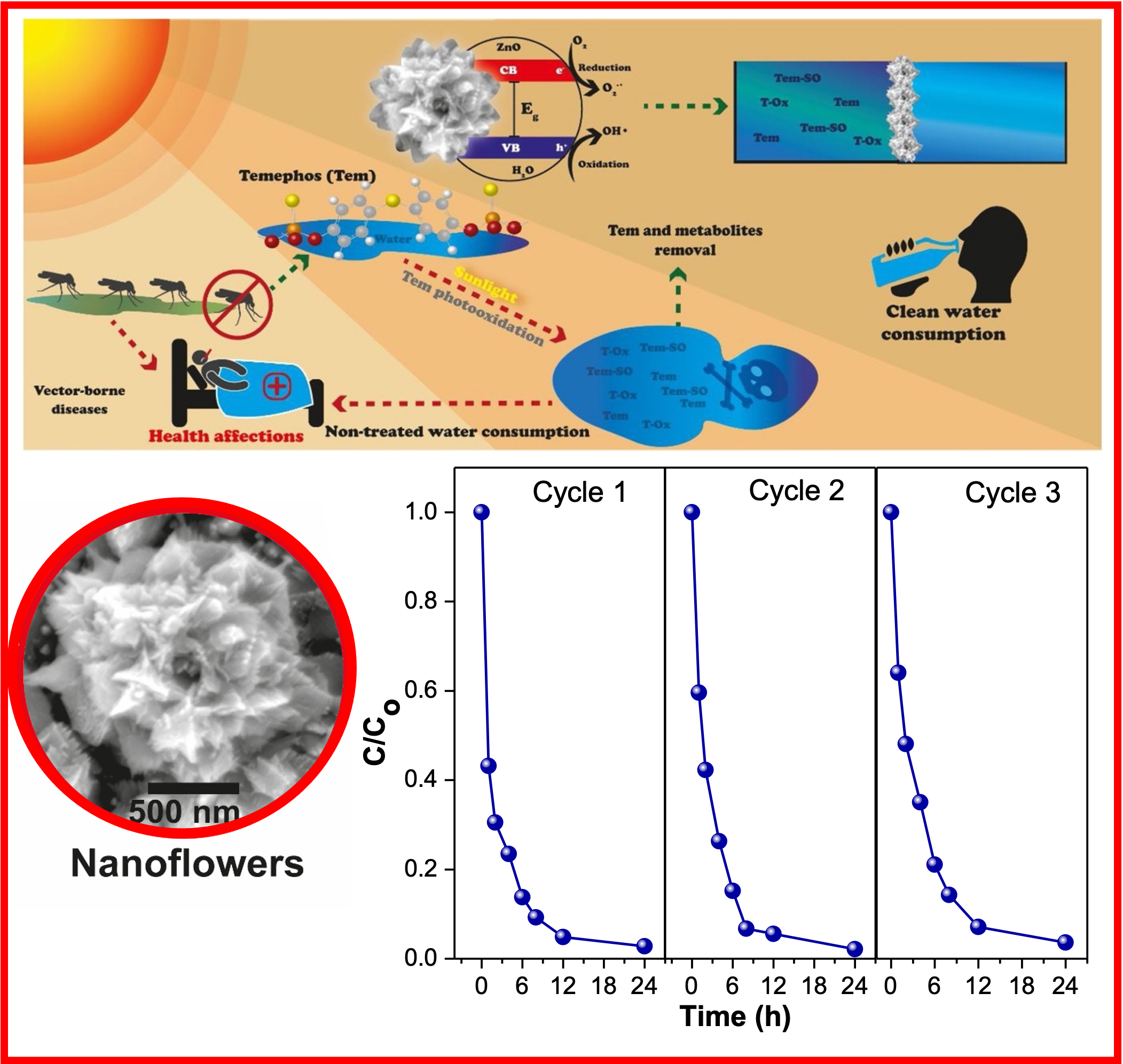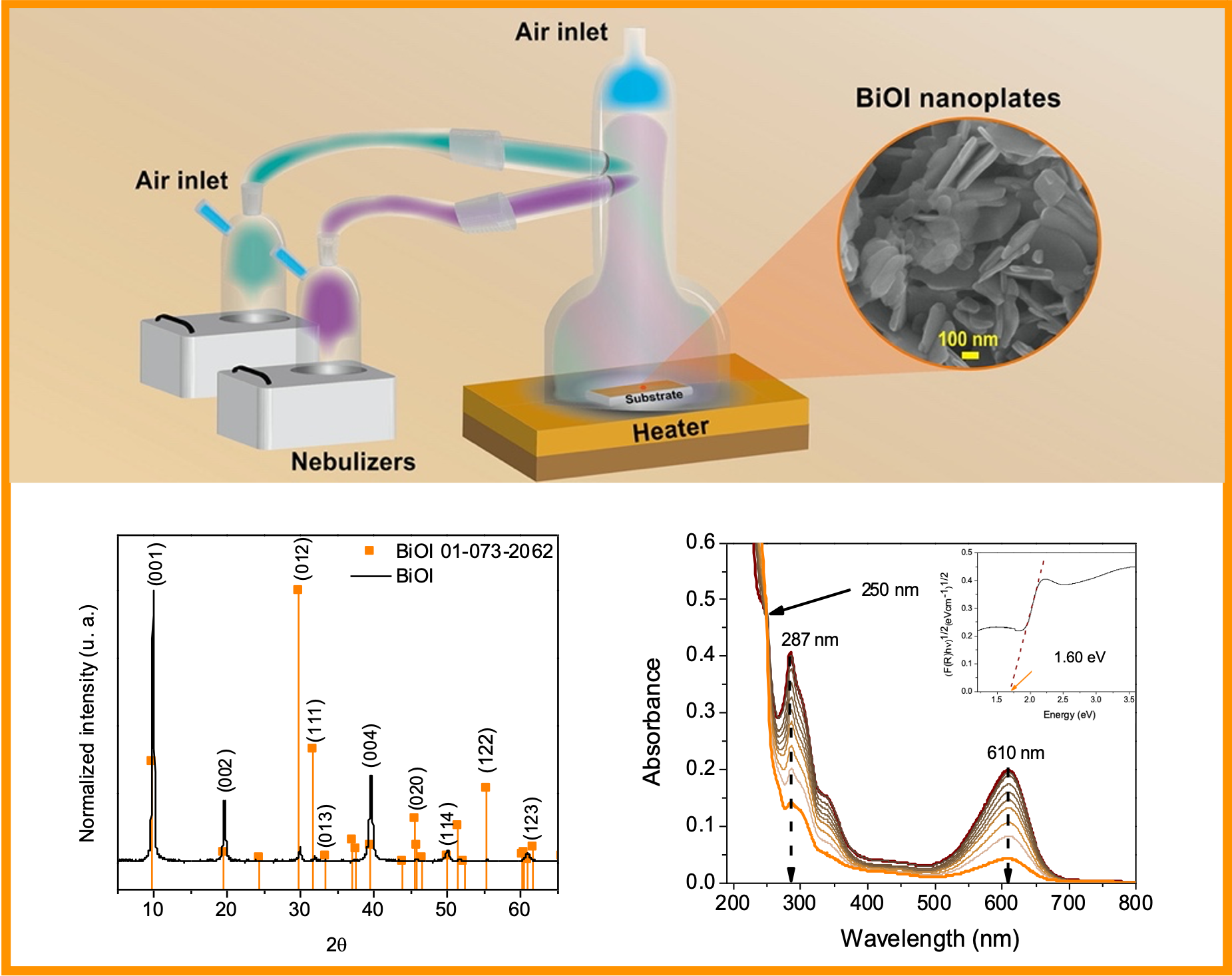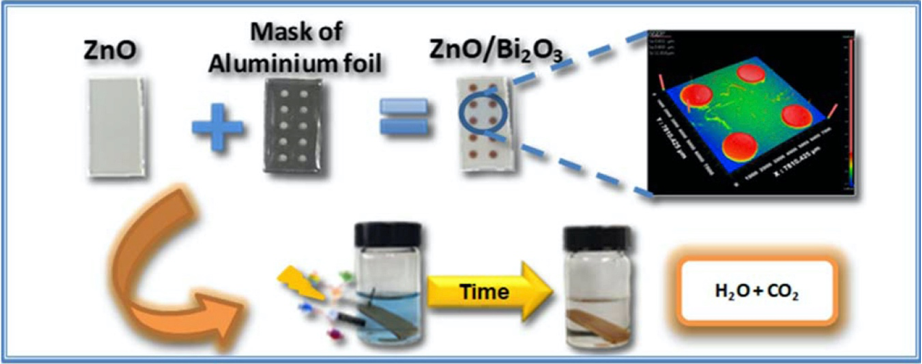Current research
This group is devoted to the synthesis and characterization of photocatalytic thin films of different materials, with especial interest in their surface modification to improve the photocatalytic activity under visible .
Photocatalytic elimination of temephos

Temephos (Tem) is a widely used pesticide to control mosquito’s proliferation in tropical countries. This pesticide is put in stagnant water bodies where mosquitoes reproduce, killing larvae effectively. Recently, Tem has been identified as a DNA damaging agent; despite, people use it unmoderated in water reservoirs for personal consumption. Thus, Tem has become a hazard for human health and needs urgent attention. To reduce the risk of toxicity in those water sources we proposed the use of nanostructured zinc oxide (ZnO) photocatalyst films to degrade this toxic compound. ZnO films with nanoflower morphology were prepared using a simple spray pyrolysis method. We used several characterization techniques to study the morphology, structure, optical properties and photocatalysis. ZnO nanoflowers were able to degrade Tem under simulated sunlight.
Synthesis of nanostructured BiOI thin films by spray pyrolysis

Bismuth oxyiodide (BiOI) is a promising semiconductor mate- rial, which has recently attracted attention for its visible-light pho- tocatalytic activity. It is a ternary oxide compound from groups V, VI and VII having a matlockite-type layered structure where each bismuth atom is surrounded by four oxygen and four iodine atoms. the synthesis of BiOI as thin film is peculiarly difficult, due to the incompatibility of most of the precursors and solvents typically used. We developed a dual-port ultrasonic spray pyrolysis system and successfully obtained nanostructured BiOI films. This method is currently used to obtain other bismuth oxyhalides such as BiOBr, and the heterojunctions of these materials for heterojunction photocatalysts.
Thin film heterojunctions for enhanced visible-light photocatalytic activity

The increasing interest of acquiring efficient visible-light active photocatalytic materials, has led to the formation of heterojunctions with different combinations of semiconductors. Despite increasingly more complex structures are proposed, there are still many unclear factors affecting their performance and limiting their prompt implementation. We are interested on knowing the key parameters that govern the photocatalytic activity on thin film heterostructures. We have studied systems such as ZnO-Bi2O3 and BiOBr-BiOI heterojunctions.